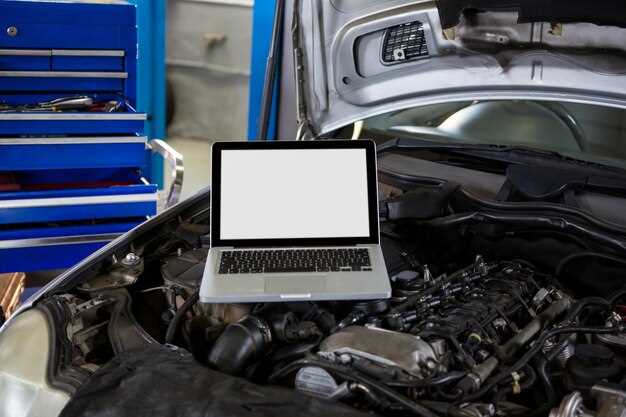
In the realm of automotive repair and maintenance, diagnosing issues in import cars requires a specialized set of tools. With the growing complexity of modern vehicles, particularly imports, mechanics must equip themselves with technology that allows for accurate assessments and efficient problem-solving. This article explores essential diagnostic tools that every professional and enthusiast should have in their toolkit.
First and foremost, OBD-II scan tools stand out as a fundamental requirement. These devices interface with a car’s onboard diagnostic system, enabling technicians to retrieve trouble codes and live data. Whether it’s a simple check engine light or a more intricate performance issue, having a reliable OBD-II scanner is indispensable for foreign car diagnostics.
Moreover, alongside electronic tools, multimeters play a critical role in diagnosing electrical issues. Many import vehicles feature advanced electrical systems that demand precise measurement of voltage, current, and resistance. Multimeters are particularly useful for troubleshooting electrical components, wiring, and battery issues, ensuring that every aspect of an import car is functioning correctly.
Finally, a graphing scanner can elevate the diagnostic process by visually representing data over time. This capability helps identify trends and anomalies that may not be evident through regular code readers. With the ability to analyze multiple parameters simultaneously, graphing scanners provide deeper insights into vehicular performance, making them a must-have for any serious diagnostic endeavor.
OBD-II Scanners: Choosing the Right One for Your Needs
When it comes to diagnosing issues in import cars, an OBD-II scanner is an essential tool for both professionals and DIY enthusiasts. With a wide variety of options available, selecting the right scanner is crucial to effectively troubleshoot and maintain your vehicle.
Understand Your Requirements: Before making a purchase, assess your needs. Consider whether you require a basic scanner for reading diagnostic trouble codes (DTCs) or a more advanced model that offers live data streaming, graphing capabilities, and advanced diagnostics. Basic models can be adequate for everyday users, while professionals may need a more comprehensive tool.
Compatibility: Ensure that the OBD-II scanner is compatible with your specific vehicle make and model. While most scanners support a broad range of vehicles, some may have limited functionality with certain brands or models, especially import cars. Check the manufacturer’s specifications and customer reviews for compatibility information.
Functionality: Different OBD-II scanners come with varying levels of functionality. Look for features that cater to your needs, such as:
- Code Reading and Clearing: The ability to read and clear trouble codes is fundamental.
- Live Data Monitoring: Real-time data can help diagnose issues more effectively.
- Graphing Capabilities: Visual representation of data can assist in identifying patterns.
- Freeze Frame Data: This feature captures the vehicle conditions at the time a fault occurs.
User Interface: A user-friendly interface can significantly enhance your experience with the scanner. Consider models with clear displays, intuitive navigation, and easy-to-understand menus. Some scanners also feature mobile app connectivity, allowing for easier data viewing on smartphones or tablets.
Brand and Support: Choose reputable brands known for quality and reliability. Brands that provide robust customer support and regularly update their software ensure that you receive assistance when needed and keep your scanner up to date with evolving vehicle technologies.
Price: OBD-II scanners are available at various price points. While it may be tempting to go for the cheapest option, investing in a quality scanner can save you money in the long run by providing accurate diagnostics and helping you avoid costly repairs. Balance your budget with the features and reliability you require.
In conclusion, selecting the right OBD-II scanner involves evaluating your specific needs, ensuring compatibility, and considering functionality, user interface, brand reputation, and price. By taking these factors into account, you can make an informed decision that enhances your ability to diagnose and maintain your import car effectively.
Multimeters and Oscilloscopes: Essential Measurements for Accurate Diagnoses
In the realm of import car diagnostics, two essential instruments stand out for their capability to deliver accurate measurements: multimeters and oscilloscopes. Each tool serves distinct purposes and plays a vital role in diagnosing electrical and electronic issues within vehicles.
Multimeters
Multimeters are versatile tools used primarily for measuring voltage, current, and resistance. Their capability to perform multiple measurements makes them indispensable in troubleshooting. Here are key functions:
- Voltage Measurement: Detects AC and DC voltages, essential for checking battery health and circuit functionality.
- Current Measurement: Measures electrical current, helping to identify shorts and faulty components.
- Resistance Measurement: Assesses resistance in wiring and components, crucial for diagnosing open circuits and ensuring proper connections.
When using a multimeter, it is critical to set it to the correct measurement type to avoid damages and inaccurate readings. Performing repeat tests can help identify intermittent issues.
Oscilloscopes

Oscilloscopes provide a dynamic view of electrical signals, capturing waveforms in real-time. They are pivotal for analyzing complex signals that multimeters cannot interpret adequately:
- Signal Waveform Analysis: Visualizes waveform shape, amplitude, and frequency, essential for diagnosing issues in sensors and actuators.
- Timing Measurements: Helps in understanding delays and signal timing, crucial for synchronizing various vehicle systems.
- Noise and Interference Detection: Identifies unwanted signal noise that could affect performance and diagnostics.
Using an oscilloscope requires knowledge of signal behavior and an understanding of voltage levels for accurate analysis. Proper probe placement and settings are necessary to obtain reliable data.
Combining Both Tools

For comprehensive diagnostics, combining multimeters and oscilloscopes enhances accuracy and efficiency:
- Utilizing multimeters for initial checks gives a foundational understanding of circuit functionality.
- Oscilloscopes can then be employed for in-depth analysis of specific signals, revealing issues multimeters might miss.
The integration of these tools in diagnostics allows technicians to pinpoint issues accurately, ensuring effective repairs and better vehicle performance. Mastering their usage is crucial for anyone involved in the field of import car diagnostics.
Tech Support Software: Streamlining Your Diagnostic Process
In the realm of import car diagnostics, the integration of tech support software plays a crucial role in enhancing the efficiency of the diagnostic process. This software bridges the gap between technicians and complex vehicle systems, allowing for accurate troubleshooting and timely resolutions.
Remote Assistance: One of the primary features of tech support software is the capability for remote assistance. Technicians can connect with experts in real-time, facilitating immediate guidance on complex diagnostic issues. This reduces downtime, enabling faster service delivery.
Database Access: Tech support software often includes access to vast databases of technical information, service bulletins, and repair manuals specific to import vehicles. This resource empowers technicians with the knowledge needed to address unique problems associated with various makes and models.
Diagnostic Tools Integration: Many tech support solutions are designed to seamlessly integrate with existing diagnostic tools and equipment. This compatibility ensures that diagnostics are conducted efficiently, with all necessary data being centrally accessible during the troubleshooting process.
Case Management: Effective tech support software often includes a robust case management system. Technicians can document issues, track resolutions, and analyze recurring problems, thus gaining insights that can inform future strategies for speeding up diagnostics and repairs.
Training and Knowledge Sharing: Continuous education is essential in the automotive industry. Tech support software can provide platforms for training, knowledge sharing, and collaboration among technicians, thereby enhancing overall skill levels and improving service quality.
Ultimately, incorporating tech support software into the diagnostic workflow not only improves the accuracy of vehicle assessments but also fosters a collaborative environment among technicians, leading to improved customer satisfaction and loyalty.




